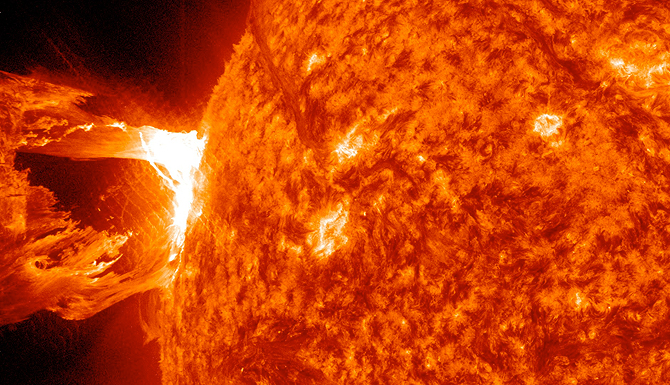![]() NASA’s Digital Learning Network and NASA Explorer Schools are hosting a special event and video chat on Nov. 2, 2012, at 1 p.m. EDT to commemorate the departure of space shuttle Atlantis. DLN hosts Rachel Power and Joshua Santora will broadcast live from NASA’s Kennedy Space Center in Florida as space shuttle Atlantis is transferred from the Vehicle Assembly Building to its permanent home at the Kennedy Space Center Visitor Complex.
NASA’s Digital Learning Network and NASA Explorer Schools are hosting a special event and video chat on Nov. 2, 2012, at 1 p.m. EDT to commemorate the departure of space shuttle Atlantis. DLN hosts Rachel Power and Joshua Santora will broadcast live from NASA’s Kennedy Space Center in Florida as space shuttle Atlantis is transferred from the Vehicle Assembly Building to its permanent home at the Kennedy Space Center Visitor Complex.
The “Roll Over” celebration will feature special guests including NASA Administrator and astronaut Charles Bolden, members of the space shuttle’s processing team and members of the team responsible for the design of the new home for Atlantis, who will answer student questions, as time permits.
The chat will be live on the NES Virtual Campus. Up to 15 minutes prior to the start of the chat, go to the event page and click on the big red “join chat” button. Student questions can be submitted by typing them in the chat window, or through Twitter by tagging the tweet with #NESChat, or by emailing them to NASA-Explorer-Schools@mail.nasa.gov. Include the student’s name, grade and school name.




 The sun’s atmosphere dances. Giant columns of solar material – made of gas so hot that many of the electrons have been scorched off the atoms, turning it into a form of magnetized matter we call plasma – leap off the sun’s surface, jumping and twisting. Sometimes these prominences of solar material, shoot off, escaping completely into space, other times they fall back down under their own weight.
The sun’s atmosphere dances. Giant columns of solar material – made of gas so hot that many of the electrons have been scorched off the atoms, turning it into a form of magnetized matter we call plasma – leap off the sun’s surface, jumping and twisting. Sometimes these prominences of solar material, shoot off, escaping completely into space, other times they fall back down under their own weight.